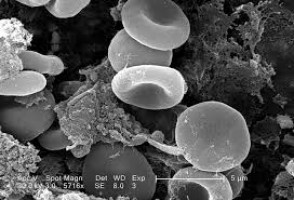
In mid-2023, the SWOG S1826 phase 3 trial in advanced Hodgkin lymphoma reported highly positive primary results earlier than expected, after the trial’s second planned interim analysis found the preset threshold for efficacy had already been reached.
Now, a follow-up analysis with additional data – a median follow-up of 2.1 years – confirms the durability of those initial findings: among the 970 newly diagnosed adolescents and adults randomised to the trial, those who received a combination of nivolumab plus AVD chemotherapy (N-AVD) had a significantly lower risk of cancer progression or death than those treated with a standard combination of brentuximab vedotin plus AVD (BV-AVD).
Results are published in the New England Journal of Medicine.
“This new analysis with more patient follow-up is critical to understanding the clinically meaningful benefit obtained from N-AVD compared to BV-AVD,” said Michael LeBlanc, PhD, lead biostatistician on the S1826 study.
LeBlanc is group statistician of the SWOG Cancer Research Network, director of the SWOG Statistics and Data Management Centre, and professor of biostatistics at Fred Hutch Cancer Centre.
The two-year progression-free survival rate was 92 percent on the N-AVD arm compared to 83 percent on the BV-AVD arm.
This benefit was generally consistent across pre-specified patient subgroups, including by patient age, disease stage, and International Prognostic Score.
Overall, the N-AVD treatment was also better tolerated than BV-AVD (AVD chemotherapy is a combination of doxorubicin/Adriamycin, vinblastine, and dacarbazine).
On the N-AVD arm, fewer patients stopped treatment early (7.6 percent of patients versus 12.0 percent) and fewer deaths occurred during treatment (0.6 percent of patients versus 1.7 percent).
The rates of most side effects were also lower on the N-AVD arm.
The differences in toxicity between the two treatments were particularly pronounced in patients older than 60 years of age.
On the BV-AVD arm, this group of patients had a higher mortality rate than younger patients, and roughly one-third had to discontinue treatment early because of toxicity, whereas patients older than 60 on the N-AVD arm did not experience significantly higher morbidity or mortality rates than their younger counterparts.
Notably, less than 1 percent of patients received radiation therapy.
The S1826 trial is supported and sponsored by the National Cancer Institute (NCI), part of the National Institutes of Health (NIH), and led by the SWOG Cancer Research Network, in collaboration with the Children’s Oncology Group (COG) and with participation from other NCI-funded National Clinical Trials Network (NCTN) groups.
It is the largest classic Hodgkin lymphoma study ever conducted in the NCTN and reflects a successful collaboration between paediatric and adult lymphoma investigators, enabling earlier evaluation of promising novel therapies in adolescents with Hodgkin lymphoma in frontline treatment.
S1826 was funded by the NIH/NCI through grants U10CA180888, U10CA180819, U10CA180821, U10CA180820, U10CA180863, and UG1CA189955, with additional support provided by Bristol-Myers Squibb (BMS) through a Cooperative Research and Development Agreement between the NCI and BMS.
Brentuximab vedotin was provided to the NCI-funded Canadian Cancer Trials Group by Seagen.
Source: SWOG Cancer Research Network